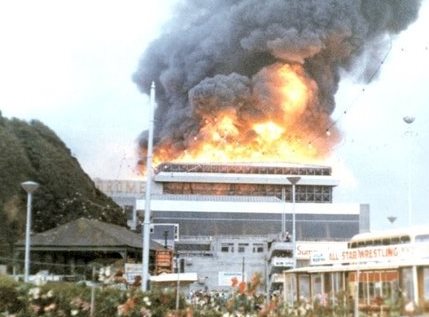
Online Exclusive: Remembering the Summerland Tragedy
The Summerland tragedy changed building regulations across the country because poor design and inappropriate building materials allowed a minor fire to become a major conflagration. The lessons learned had influence across many international jurisdictions.
- By Jimmy Chiu
- Aug 07, 2013
August marks the 40th anniversary of the worst peacetime fire in the British Isles since 1929, and the worst disaster in the history of the Isle of Man–an island that lies between England and Ireland. While being part of the British Isles, the Isle remains a Crown Dependency.
The fire changed building regulations across the country because, most tragically, poor design and inappropriate building materials allowed a minor fire to become a major conflagration. The lessons learned had influence across many jurisdictions internationally.
The catastrophe took place at the 3.5 acre Summerland resort on the Isle of Man, which advertised itself as the biggest and most innovative entertainment center in the world. The British Tourist Authority described it as “an outstanding tourist enterprise.”
Designed to attract visitors away from cheap overseas resorts, the center had an indoor heated swimming pool, saunas, Turkish baths, an artificial sunshine zone, a children’s theatre, an underground disco, waterfalls, and restaurants and bars with live entertainment throughout the day.
One promotion extolled the center as “a holiday town where it never rains, the wind never blows and the temperature never gets chilly. Outside it’s raining, yet here you are relaxed in your shirt sleeves, gently perspiring in a tropical 80 degrees.”
Year-round artificial sunshine was achieved by a transparent roof comprising acrylic bronze-tinted sheets. There were seven floors in total and the building had a capacity for more than 5,000 people.
For just over two years the waterfront center attracted visitors from all over the world. It appeared that the vision behind its creation was working, taking Manx tourism into a bright future. On the evening of August 2, 1973, an estimated 3,000 people were enjoying themselves at the resort.
During that time, three schoolboys on holiday from Liverpool were hanging around at the back of the building next to a dismantled fiberglass kiosk. They were smoking, and the fire they inadvertently set off killed 50 people and gutted the complex.
The small fire in the kiosk triggered a number of fire events. First, the kiosk collapsed against the exterior wall of the building, which contained both asbestos and bitumen–with very limited fire-resistance.
Second, this set fire to interior sound-proofing material, which also had poor fire-resistance, causing an explosion that ignited the highly flammable acrylic sheeting which covered much of the rest of the building. The acrylic then melted, allowing oxygen to flood in and drop burning material inside, starting more fires and injuring people who were trying to escape.
Third, the fire spread quickly across sheeting on the center walls and roof, and through vents that were not properly fireproofed. Some parts of the roof were comprised of wood-wool slabs with felt and chippings on top.
In addition, the building's open-plan design included many internal spaces that simply acted as chimneys to spread the fire.
Making things worse, the fire service wasn’t alerted for almost 30 minutes. The alarm was only raised by a ship two miles out to sea that reported, “it looks as if the whole of the Isle of Man is on fire". It was the Coastguard that called the fire service.
 The first responding fire crews quickly assessed the severity of the incident. At its height, 96 of the island’s 106 firefighters attended the fire and all of its 16 fire engines.
The first responding fire crews quickly assessed the severity of the incident. At its height, 96 of the island’s 106 firefighters attended the fire and all of its 16 fire engines.
Further compounding the tragedy, there was little or no attempt to evacuate the 3,000 people inside the center. In a rush to escape, many people were crushed and trampled because of locked exit doors. Others who made their way to the main entrance caused further crushing.
Emergency lighting also failed after the main electrical supply was mistakenly turned off and the emergency power generator failed to start. The main factors in the tragedy–inappropriate building materials, lack of compartmentation and protected escape routes–all came under scrutiny in the subsequent public enquiry.
While no individuals or groups were blamed, changes to building regulations to improve fire safety were introduced nationwide.
Central to those changes were better approaches to contain fire and ensure that escape routes were protected–areas that Wrightstyle, with our steel glazing systems, have particular experience and expertise. Our systems have been installed worldwide, from the USA to Australasia, to protect against fire, or ballistic and bomb attack.
The Summerland steel skeleton was demolished in 1975, and a smaller center was reopened in 1978. It closed in 2004 and was demolished in 2005.
A memorial to all those who lost their lives is being planned by Douglas Borough Council.